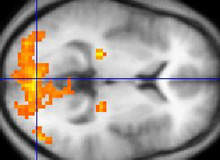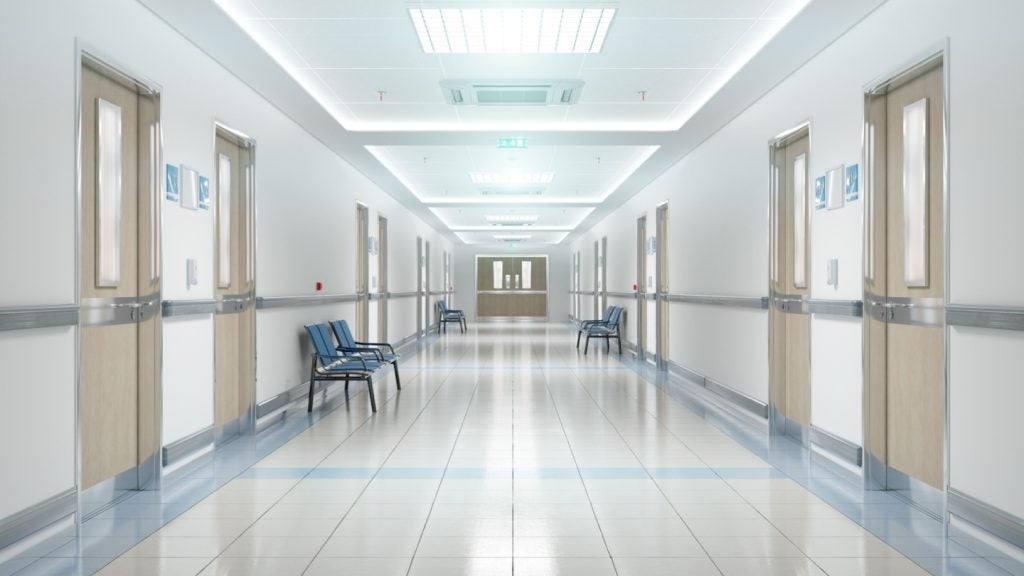
Patient access to diagnostic imaging in emerging economies varies across different regions, even within the same country. Patients living in fast-growing, larger cities in high-growth economic regions have a higher level of access to diagnostic imaging, due to wealthier patients, a greater number of insured people and increased investments in diagnostic imaging equipment by the private sector.
Patients living in smaller cities and rural areas of high growth and low growth economic regions have a lower level of access to diagnostic imaging. However, patients living in smaller cities and rural areas of high growth economic regions have higher affordability, but the availability of diagnostic imaging equipment is lower. This is due to low private sector investment and a smaller number of referring physicians. In low growth economic regions, patients living in smaller and rural cities have low access due to low affordability of patients.
The expansion of health insurance to include low income population, buying used equipment, incentives for private sector and physicians and increased government investments in healthcare are suggested as possible remedies to improve the accessibility of diagnostic imaging to patients.
Patient access to diagnostic imaging depends on affordability and availability. Patients in emerging economies such as Taiwan and Brazil have higher affordability because the majority of them are covered under government sponsored health insurance programmes. In economies such as India, the government health insurance programmes cover a very small percentage of the population, which makes affordability a matter of an individual’s financial health. In the majority of emerging economies, growth in private healthcare insurance and healthcare services providers has been enormous in the past decade. However, access to diagnostic imaging is not increasing at the same rate. The common thread among all the emerging economies is the lack of availability of diagnostic imaging for the entire population.
High-end diagnostic imaging equipment such as CT and MRI systems are capital intensive so governments may not be able to provide access to those facilities to all their citizens in all parts of the country, whereas the private sector operates only in bigger and medium cities and high growth economic regions.
Low physician prescription rates of imaging scans is another key aspect that is leading to low access in emerging economies. This is a historical trend, which is slowly changing depending on the availability of the diagnostic imaging equipment. Another dampener leading to low access is the fact that the majority of physicians and radiologists prefer living in bigger and mid-sized cities due to higher growth prospects.
How well do you really know your competitors?
Access the most comprehensive Company Profiles on the market, powered by GlobalData. Save hours of research. Gain competitive edge.

Thank you!
Your download email will arrive shortly
Not ready to buy yet? Download a free sample
We are confident about the unique quality of our Company Profiles. However, we want you to make the most beneficial decision for your business, so we offer a free sample that you can download by submitting the below form
By GlobalDataThis is one of the key reasons people living in smaller cities and rural areas have low access to imaging.
Availability and affordability
In emerging economies such as China and India, which have huge general and patient population, low-cost diagnostic imaging equipment such as ultrasound and X-ray systems witnessed most installations from 2000-2009 (see Figure 1 and Table 1), compared to capital intensive equipment such as CT and MRI systems where the cost of each system runs into more than $1 million. High affordability is the primary reason for the greater number of installations of ultrasound and X-ray systems compared to CT and MRI systems. However, when a comparison is drawn between India and China which have similar populations, India clearly lags behind in all types of diagnostic imaging equipment installations.
Chinese and Indian people have better access to ultrasound and X-ray imaging considering each system can service about 7,500 patients annually. Although each CT and MRI system can also service 7,500 patients annually, there is not enough availability of them to service all their patients. Their shortage is more pronounced in India than China considering the availability of less than one system per million people. (See Table 2).
Even within the same country, patient access to diagnostic imaging varies across different regions. The distinction between rural and urban areas in terms of patient affordability is slowly fading.
The distinction that is emerging is the high and low-growth economic regions. People living in regions that are prospering due to the economic growth have better access to diagnostic imaging compared to low and emerging economic regions. The reasons are simple:
High economic growth is resulting in high patient affordability. Patients have been able to afford expensive diagnostic imaging such MRI scan of the brain.
High patient affordability is leading to increased investments from private sector. There has been a huge growth in the diagnostic centres independent of hospitals.
Regional governments with increased revenues have been able to invest more in healthcare including diagnostic imaging.
There are stark differences in access to different types of diagnostic imaging within high economic growth regions. Larger cities are witnessing more investments in the latest imaging equipment from the private sector, which is leading to greater access for patients. India’s thriving economy is driving urbanisation and expanding the middle class, which has more disposable income for healthcare. In 2009, about 63% of the Indian middle class was living in urban areas, compared to 50% in 2000 (see Table 3). In 2009, the per capita income of Indians was about $1,100. While this may seem less than that of their US counterparts, it is the equivalent of more than $100,000 per year, when adjusted for purchasing power parity.
Another healthy trend is the increasing number of women entering the job market, which is further boosting the affordability of Indian households. In the ten-year period between 1991 and 2001, the percentage of women in the workforce increased from 22-26%. Thanks to rising income, about 50 million Indians can now afford to buy Western medicines. As the Indian economy continues to grow faster than that of the developed economies, much of western and southern India will be middle class by 2020.
It is important to note that there is a huge difference between the diagnostic imaging costs in emerging economies such as India and those of developed economies in the Western world. An MRI scan in India costs about $100–200 compared to $1,100–2,700 in the US.
Patients living in bigger cities have higher levels of awareness and affordability of healthcare insurance, which is translating into more healthcare services being consumed. Hospitals and independent diagnostic imaging centres have been quick to invest in high-end diagnostic imaging equipment such as CT and MRI systems. Even government hospitals in these cities have been installing high-end diagnostic imaging equipment. Also, increased competition is leading to competitive pricing for imaging scans in these cities. This is further boosting the affordability and accessibility of diagnostic imaging to patients in these regions.
Growth being saturated and competition being intense in large cities, the attention of the diagnostic imaging companies is turning towards mid-sized cities. They are working with private hospitals and independent diagnostic centres to install the latest equipment in these cities. Many corporate hospitals in India are currently focusing on medium-sized cities for growth opportunities. This is good news for the people living in these cities because they do not have to travel to large cities for advanced imaging scans.
In smaller cities and rural areas of high growth economic regions, the access to high-end imaging is very limited. Government hospitals and very few private hospitals and independent diagnostic centres have diagnostic imaging equipment installed. The equipment installed is also low-end, with limited capabilities. Ultrasound and X-ray systems are the most common equipment found in these areas, with CT and MRI systems being a rarity. This is true even for government hospitals that provide free imaging access to citizens. Even though patients living in these regions can afford advanced imaging scans, these areas are not attracting considerable investments. The primary reason for this is that return on capital invested is slow and there are fewer referring physicians. Patients in these regions usually ignore ailments until they become intolerable and warrant a medical visit. Also, patients have a tendency to go to mid-sized and large cities for serious medical conditions. A combination of these factors is slowing investments in high-end diagnostic imaging equipment in small cities and rural areas.
Imaging access is at a low level for people living in smaller cities and rural areas of emerging economic regions and slow growth areas. Even in medium-sized cities, the access is lesser compared to medium-sized cities of high growth economic regions. This is due to slow private sector investment and lack of funds with the regional governments (see Table 4).
Growing patient population is posing a considerable problem for emerging economies.
Healthcare services including diagnostic imaging services have not been able to keep up with patient demand. Patients most affected are from small cities and rural areas of both the economically prosperous regions as well as emerging and low growth economic regions. This trend is most likely to continue in the future considering the huge populations of China and India living in rural areas and the private sector’s predominant focus on profitability. This leaves the onus on the government and non-profit organisations to address the diagnostic imaging accessibility issues of the patients.
Several solutions have been suggested to improve the accessibility of diagnostic imaging.
Insurance expansion
There is a greater need to bring more people under healthcare insurance cover to increase the affordability of the population. In India, both the central and state governments are trying to address this issue by providing healthcare insurance to their employees. In the private sector, 40% of employers provide healthcare insurance to their employees. To bring more people under healthcare insurance cover, government and private insurers should concentrate on medium-sized cities and rural areas. Some state governments such as Andhra Pradesh have taken initiatives and started providing health insurance cover for economically weaker population. This type of scheme needs to be permanent in nature and should extend to all parts of the country.
Buy used
Buying used equipment for smaller cities and rural areas is a better idea, especially for CT and MRI systems, because the new ones are very expensive. There are organisations specialising in selling used equipment. In developed economies such as the US, hospitals replace their existing diagnostic imaging equipment every five years. Non-profit organisations can work with them to buy used diagnostic imaging equipment.
Provide incentives
Governments should provide incentives to radiologists and private hospitals and independent diagnostic centres to invest in smaller cities and rural areas. The Indian government is encouraging the growth of diagnostic imaging equipment market, through policies such as a reduction in import duties on medical equipment, higher depreciation on life-saving medical equipment (40%, up from 25%), and a number of other tax incentives.
New equipment installations are, however, highly concentrated in medium and large cities. Government needs to provide additional incentives for private investors to install high end diagnostic imaging equipment in smaller cities and rural areas.
Increase state investment
Emerging economies are trying to address the accessibility to healthcare including diagnostic imaging by announcing economic stimulus packages. In March 2009, China’s State Council announced $123bn for healthcare reforms as part of its $586bn stimulus package. Money will be spent to improve healthcare infrastructure and provide healthcare insurance for 800 million rural residents and for aging population. Under the plan, the target is to get 90% of Chinese citizens under a universal healthcare system by 2010. They are also planning to upgrade the existing healthcare facilities, which include diagnostic imaging equipment and construction of 30,000 new hospitals, clinics and care centres. The good thing about new investments is that the Chinese government is planning to build local clinics and hospitals rather than bigger hospitals in bigger cities.







